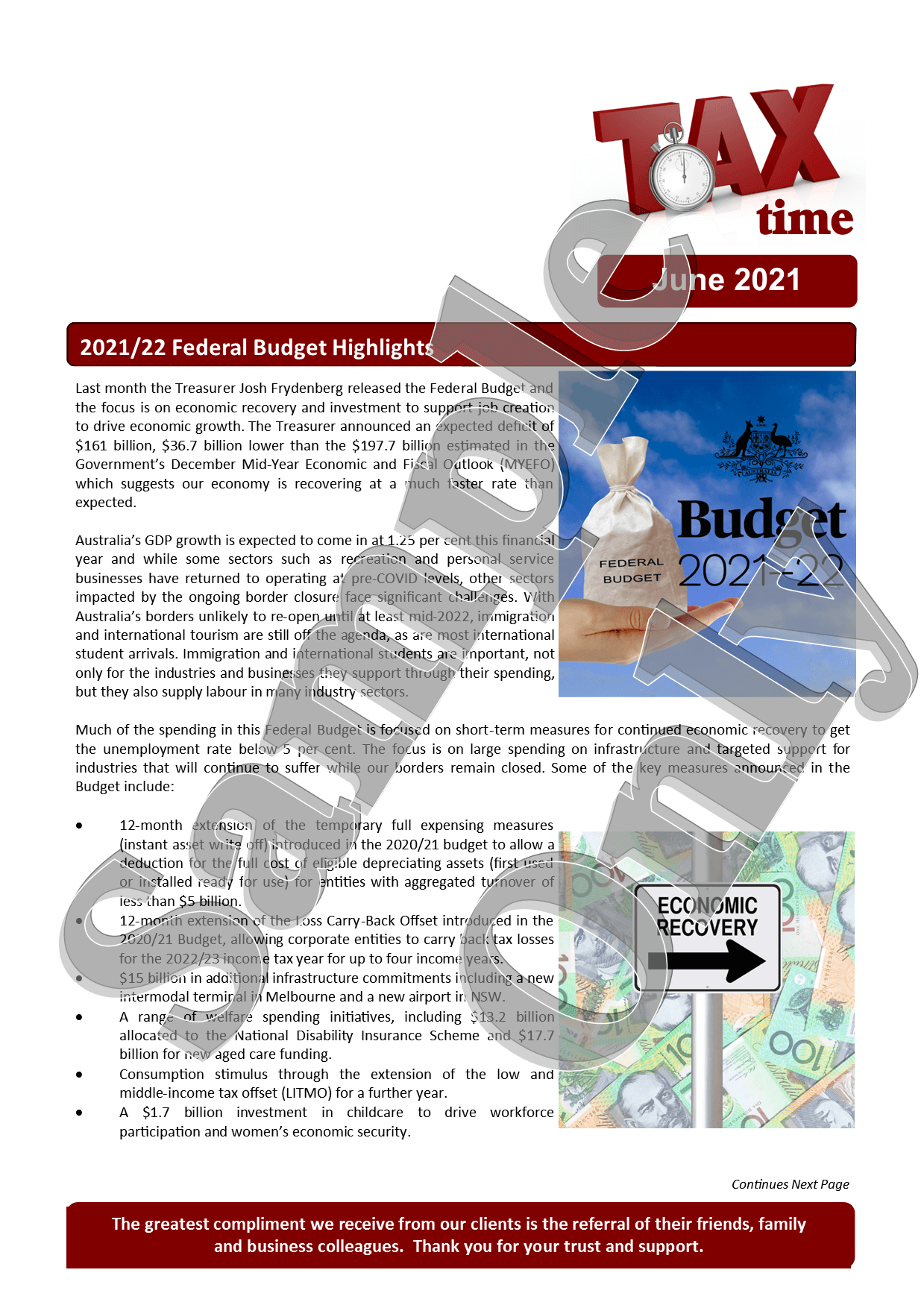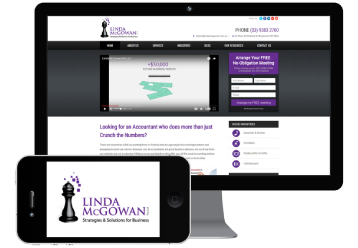How GST Disguised the Need for Marketing ... and What to do About It.
 The vast majority of accounting firms in this country are flat lining or in decline. Only a small percentage of firms are achieving double digit growth and a lot of firms are in trouble with an ageing client base. Their referral engines have seized-up and they have become compliance sweatshops.
The vast majority of accounting firms in this country are flat lining or in decline. Only a small percentage of firms are achieving double digit growth and a lot of firms are in trouble with an ageing client base. Their referral engines have seized-up and they have become compliance sweatshops.
Lets’ turn the clock back to see where it all went wrong and how GST disguised the need for accounting firms to market their services.
If we rewind to the year 2000, GST had just been introduced and it was chaos. The new tax system was confusing for business owners and a huge number were shifting their bookkeeping from manual cashbooks to software programs like MYOB, Quicken and Cashflow Manager. As a result, accountants were kept very busy dealing with ‘computerised shoebox’ records from clients and every firm was experiencing solid growth fuelled by the demand for GST compliance services. It was an exciting time and the next decade proved to be a golden era of growth for accounting firms.
Fast forward to 2010 and the GST dust had settled, however, the landscape was changing. Some firms had started to outsource compliance work to relieve the pressure on their workload and reduce labour costs. By 2010 the GFC and tighter credit conditions had taken hold. Some larger clients were hurting and they contracted or folded. For the first time in years, firms reported negative growth and referrals had also started to slow. Most partners and principals dismissed these as symptoms of an economic downturn, they had seen it all before and the tide would turn soon enough. There was no cause for alarm and the traditional marketing methods that had served them well in the past would kick in and get things moving again.
THE PERFECT STORM 
However, around the same time a perfect storm was brewing in the profession. The internet revolution was underway, consumers had started to buy accounting services online and offline marketing tactics like flyers, local newspaper ads, Yellow Pages and networking had lost their marketing mojo. Compliance work was becoming commoditized and a lot of firms had become complacent about their growth.
Marketing was shifting from offline strategies to online methods and the firms who redirected their marketing focus to online Google searches, content marketing and social media channels started to kick some goals. They were attracting their ideal type of client from their niche industries who wanted their specialist services. By around 2012, a number of traditional firms were in denial about the changing landscape and they started to leak clients to these ‘modern’ firms. Not only that, their marketing wasn’t working and the symptoms of an ageing client base were starting to show with retirements, clients selling their businesses and losses due to natural attrition.
The firms that had almost exclusively relied on referrals for their growth had hit the wall. Their client base of 55 to 65 year-olds don’t refer like their 25 to 35 year-old counterparts. At the same time, the next generation of clients had embraced social media channels like Facebook and Twitter and while referrals were flowing online, a lot of traditional firms had their head in the social media sand. To make matters worse, these older clients generally don’t require advice on services that had fuelled the growth in small firms for decades - starting a business, buying a business or negative gearing.
With referrals drying up and the leakage of clients to the more marketing savvy firms the compliance centric firms sought a solution. They rushed out and bought an off the shelf website, however, in 95 percent of cases they ended up with what can only be described as an ‘electronic brochure’. These websites look good but they simply list the who, what and where of the firm. They are full of duplicate content, the staff profiles are shallow, the list of services are simply bullet points and the images are all stock photos. These websites were never going to generate any real traffic or leads and they would never attract your ideal type of client.
Hinge Marketing (a leading group of marketing consultants) suggest these brochure or billboard type websites do more damage than good. Their research shows that 80% of buyers check out a professional service firm’s website at some point in their buying journey. However, 52% of the time that referred prospect never reaches out to the firm. The reason, the website doesn’t match what they had heard from their trusted referee!
These websites repel the younger generation who perceive the firm to be a dinosaur. As such, these websites certainly didn’t deliver the miracle marketing cure these firms hoped for. Ironically, because of their failure, a number of partners and principals have come to the conclusion that websites are a waste of money. By contrast, some members of the Accountants Accelerator Group are generating six figure returns each year from their website. They understand their website needs to be the hub of their marketing activities and it will always be a work in progress. Content is king and it drives the search engines like Google. Firms that bought an electronic billboard website with a ‘set and forget’ attitude are hallucinating if they think it will create a constant stream of new clients. To lift your search engine page ranking you need a consistent flow of original fresh content that resonates with your target market. Without a blog, videos, lead magnets, calls to action and active social media links your website is just gathering dust.
 Fast forward to today and we have a sea of sameness in the profession. It’s a crowded market and very few firms stand out in the online space. Incredibly, the majority of firms still view their website as a cost, not an investment. In another article, Why Do Accountants Spend So Little on Marketing I highlighted the fact that in Australia the vast majority of smaller firms (with fees less than $1M) spend less than one percent of their gross revenue on marketing. Consumer buying habits have changed and you and your clients need to adapt to this shift to online marketing. The internet and technology is driving these changes and recent research from Xero shows that firms with a higher concentration of clients using cloud accounting software are adding more business and seeing higher year-over-year revenue growth. Gen Y are coming of age and they grew up with a smart phone in their pocket. They are the next generation of business owners and a website that is really just an electronic brochure won’t cut it anymore. Your client base may have been built on long-term relationships and location-based services but technology has significantly disrupted this dynamic.
Fast forward to today and we have a sea of sameness in the profession. It’s a crowded market and very few firms stand out in the online space. Incredibly, the majority of firms still view their website as a cost, not an investment. In another article, Why Do Accountants Spend So Little on Marketing I highlighted the fact that in Australia the vast majority of smaller firms (with fees less than $1M) spend less than one percent of their gross revenue on marketing. Consumer buying habits have changed and you and your clients need to adapt to this shift to online marketing. The internet and technology is driving these changes and recent research from Xero shows that firms with a higher concentration of clients using cloud accounting software are adding more business and seeing higher year-over-year revenue growth. Gen Y are coming of age and they grew up with a smart phone in their pocket. They are the next generation of business owners and a website that is really just an electronic brochure won’t cut it anymore. Your client base may have been built on long-term relationships and location-based services but technology has significantly disrupted this dynamic.
Most accountants are time poor and don’t have the time or skill to write blogs, prepare video scripts and then record and produce them. They also struggle to produce a client newsletter and tend to buy an off the shelf tax newsletter full of the latest tax rulings and case law. Unfortunately, your clients didn’t sign up to do a Masters of Taxation by correspondence and they really want information on how to grow their business, their profits and their wealth. Our Accountants Accelerator Group members have all their newsletters, social media posts, blogs and marketing done for them. It’s not cheap but you can spend your time helping clients, not finding clients.
In business, if you keep doing things the same way and expect a different result you are out of touch. At the end of the day, with your website and content marketing it’s not about the cost, it’s all about the return on your marketing investment. With so many firms stalling and without a marketing plan it’s no surprise to find we have more than 250 firms looking to buy fees in Victoria. The demand in other states is also at record levels and if you read the article, Why Are There So Many Firms Looking to Buy Accounting Fees you’ll understand that a portion of these buyers are looking for a marketing quick fix. Now, there’s fundamentally nothing wrong with buying fees but if you’re thinking of investing hundreds of thousands of dollars in someone else’s business you need to be buying for the right reasons. You also need to do your due diligence because you might find the only stock available is a retiring baby boomer’s practice that is in decline with an ageing client base. Buying this type of firm won’t fix your growth problem, it will compound the problem because in a few years you could have ‘double trouble’ with both fee bases shrinking.
business, if you keep doing things the same way and expect a different result you are out of touch. At the end of the day, with your website and content marketing it’s not about the cost, it’s all about the return on your marketing investment. With so many firms stalling and without a marketing plan it’s no surprise to find we have more than 250 firms looking to buy fees in Victoria. The demand in other states is also at record levels and if you read the article, Why Are There So Many Firms Looking to Buy Accounting Fees you’ll understand that a portion of these buyers are looking for a marketing quick fix. Now, there’s fundamentally nothing wrong with buying fees but if you’re thinking of investing hundreds of thousands of dollars in someone else’s business you need to be buying for the right reasons. You also need to do your due diligence because you might find the only stock available is a retiring baby boomer’s practice that is in decline with an ageing client base. Buying this type of firm won’t fix your growth problem, it will compound the problem because in a few years you could have ‘double trouble’ with both fee bases shrinking.
There’s no doubt GST disguised the need for marketing. The world has changed in the past few years and you can’t afford to rely on old marketing methods any more. You can’t grow your business on a shoestring budget either.
If you’ve got an ageing client base or your website isn’t generating new business then we invite you to join us in Sydney on November 14 at the Accountants Accelerator Seminar. You’ll get a ‘website master class’ and learn the online secrets of some incredibly successful firms. You’ll walk away with a blueprint to transform your firm’s website into a marketing magnet plus we’ll equip you with the knowledge to build a brand that resonates with 25 to 45 year-old business owners. You’ll see first hand the tools that these firms are using to rejuvenate their ageing client base and to register go to https://www.eventbrite.com.au/e/accountants-accelerator-seminar-tickets-28022685607







-P-J-Camm-banner.jpg)









Leave a Comment